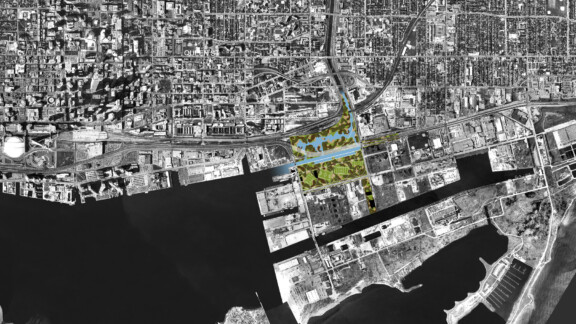From urban brownfield to public park in Toronto’s Portlands
This 41-acre project playfully appropriates the art of “camouflage” to address the former munitions history of the site. An organic demarcation of spaces results in a picturesque patchwork of dramatic landscapes and varied activities, overlaid with a filigree of circulation. Interweaving ecological functions with landscape aesthetics, diverse landforms respond to the need to contain and remediate soils contaminated by previous industrial activity.
Acknowledging and celebrating the constructed nature of the area, Camouflage Park carpets the site in an organic yet geometric pattern of landscapes. Each colour in the camouflage represents a distinct gesture in the finished park, creating a collage of fields for recreational sports, forests for casual walks, and groves for intimate gatherings. Inspired by the motifs of a tableau by British artist Bridget Riley, a geometric pattern of paths and roadways are overlaid on this landscape.
The aesthetics of Camouflage Park are a modern interpretation of the picturesque tradition. From the 18th century, it takes inspiration from Humphry Repton’s scenographic strategies of constructing serpentine routes between intimate terraces and distant vistas of the English countryside. From the modern side, Camouflage Park takes aesthetic cues from the constructed topographies of modern golf course designs. The result of this alchemy is a bold, layered design that revisits the proven techniques of the picturesque in a fresh, contemporary landscape.




